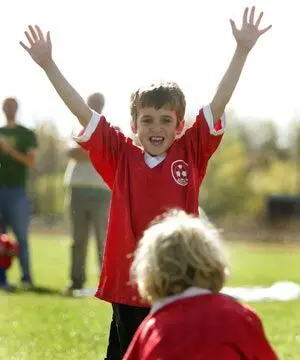
Dec 15, 2015 • 4 min read
Letting Young Kids Specialize in One Sport is a Bad Idea
By Istvan Balyi and Jim Grove
So many parents dream about their children becoming superstar hockey players, or figure skaters, or basketball players. And one question that often generates heated discussion among coaches and sport parents is when kids should play one sport to the exclusion of all others.
All too often, in most sports, children are pushed to specialize too early.
Too many coaches and parents push them to focus on one sport long before high school in the belief that they will “miss out” if they don’t. The thinking is that they need to “get ahead of the pack” by putting in the extra hours and staying away from other sports.
 Meanwhile, the research suggests that specializing too early probably prevents most kids from reaching their full potential in their sport. They might win the district championships for Grade 8 basketball, but that will be their peak achievement. They won’t make the cut for the national team and the Olympics at age 19.
Meanwhile, the research suggests that specializing too early probably prevents most kids from reaching their full potential in their sport. They might win the district championships for Grade 8 basketball, but that will be their peak achievement. They won’t make the cut for the national team and the Olympics at age 19.
It seems counterintuitive. How could specialization reduce your success?
It’s connected to physical literacy and the need to develop a wide range of physical, mental, and emotional skills within sport. When researchers look at top athletes across a range of sports, the majority of them are distinguished by broad athletic ability from playing a variety of sports as children. This kind of broad athleticism doesn’t happen when kids specialize in one sport from an early age.
(Please note: We haven’t even mentioned the problem of overuse injuries to tendons, ligaments, and bone growth plates due to premature specialization. There’s enough research on that subject to write a book. Premature specialization is also linked to kids dropping out of sports early.)
Is early specialization wrong for all sports? No. But research shows very few sports where it helps.
Sports and activities such as gymnastics, figure skating, diving, and dancing generally require early specialization. To reach the highest levels of competition, your child needs to start young and spend most of their time practicing that sport or activity.
However, sports such as hockey, soccer, basketball, baseball, and tennis are late specialization sports. If you want your child to have a chance to go to the Olympics or the World Cup in these sports, the evidence suggests they should also play other sports until at least age 14. This is called “sampling” or “early diversification”.
So when should your child specialize in one sport? First of all, you should ask them if they even want to specialize. Maybe they don’t want to, and that’s okay. Not everyone dreams of going to the Olympics or playing in the NHL.
However, if we imagine that your child shares your enthusiasm in a late-specialization sport such as hockey, soccer, squash, volleyball, baseball, tennis, or basketball, there seems to be a general age range where specialization becomes important. It depends on the sport, your child’s level of maturation, and–if we are talking about a team sport–their playing position. The general rule would be sometime around the middle of high school, or ages 14-16 years.
When you feel the urge to make your child specialize early, remember that Steve Nash didn’t even start playing basketball until he was 13-years-old. Wayne Gretzky started hockey young, but he also played baseball, lacrosse, and tennis into his teens.
Pro athletes and their childhood sports
- Wayne Gretzky (hockey): baseball, lacrosse, tennis
- Abby Wambach (soccer): basketball
- Christine Sinclair (soccer): basketball, baseball
- Alex Morgan (soccer): basketball, softball
- Steve Nash (basketball): hockey, soccer, lacrosse, baseball
- Roger Federer (tennis): soccer
- Novak Djokovic (tennis): skiing
- Michael Phelps (swimming): baseball, soccer, lacrosse, golf
Istvan Balyi is a sport scientist and coaching educator of international reputation. He is a founder of the long-term athlete development (LTAD) model and has been an early leader and proponent for physical literacy in education and community sport. Jim Grove is a contributing editor with Active for Life is a nonprofit organization committed to helping parents raise happy, healthy, physically literate kids. For more articles like this one, please visit ActiveforLife.com.
